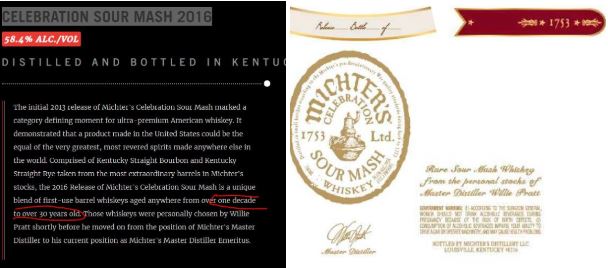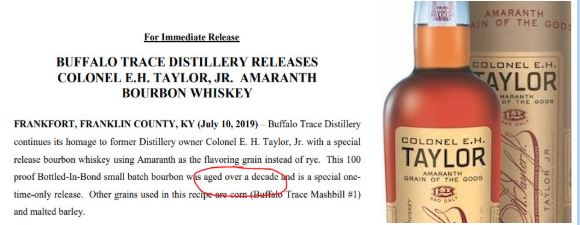When is an age statement not an age statement? In my previous blog post, https://tater-talk.com/2019/07/23/rums-misleading-age-statements-and-other-lies/, on misleading age statements in rum I listed 3 ways producers mislead consumers. Today I’ll look at another common way spirit producers abuse age statement requirements. I’ve seen this method used by all types of spirits.
The TTB regulates alcohol beverage advertising. Obviously, this includes rules on what can and can’t be stated on the product’s label. This also extends to ads in newspapers, magazines, TV or radio broadcasts, internet based social media, as well as websites.
I’ve talked before about how some whiskey blog posts basically repack a brands PR on a new product as their new blog post. Often these include an age reference, but the actual bottle is NAS – No age statement. I’ve always found this to be disingenuous; if the whiskey is “X” years old, then state it on the bottle. This violates TTB code:
CFR 27 5.65 (b) (2) (c) Statement of age. The advertisement shall not contain any statement, design, or device directly or by implication concerning age or maturity of any brand or lot of distilled spirits unless a statement of age appears on the label of the advertised product.
Unless the bottle carries an appropriate statement of age, the producer can make no claims of age in the advertising.
Let’s look at some blatant examples of producers violating this.
The new Buffalo Trace grain of the tater bottling, oops I mean the new Buffalo Trace E.H. Taylor, Jr. Amaranth Straight Bourbon whiskey in their PR states it is aged ‘over a decade’. Yet the actual product released is NAS.

Flor de Cana states on their website their rum is 18 years old. The actual bottle has just a number which is not an age statement.

Here is Michter’s website saying this whiskey is a blend of 10 to over 30 year old whiskeys. The actual bottle has no age statement.

This is from the website for Straight Edge. This is a bourbon finished in XYZ cask, which makes it a class type 641 Distilled Spirits Specialty and by code not allowed to state an age statement.

Are these producers not aware of the US federal code? Are they misleading consumers on purpose? Perhaps the first release is the PR advertised age statement, but future releases will be much younger? I know I will trust for fact what is actually on the bottle and discount anything in advertising.


